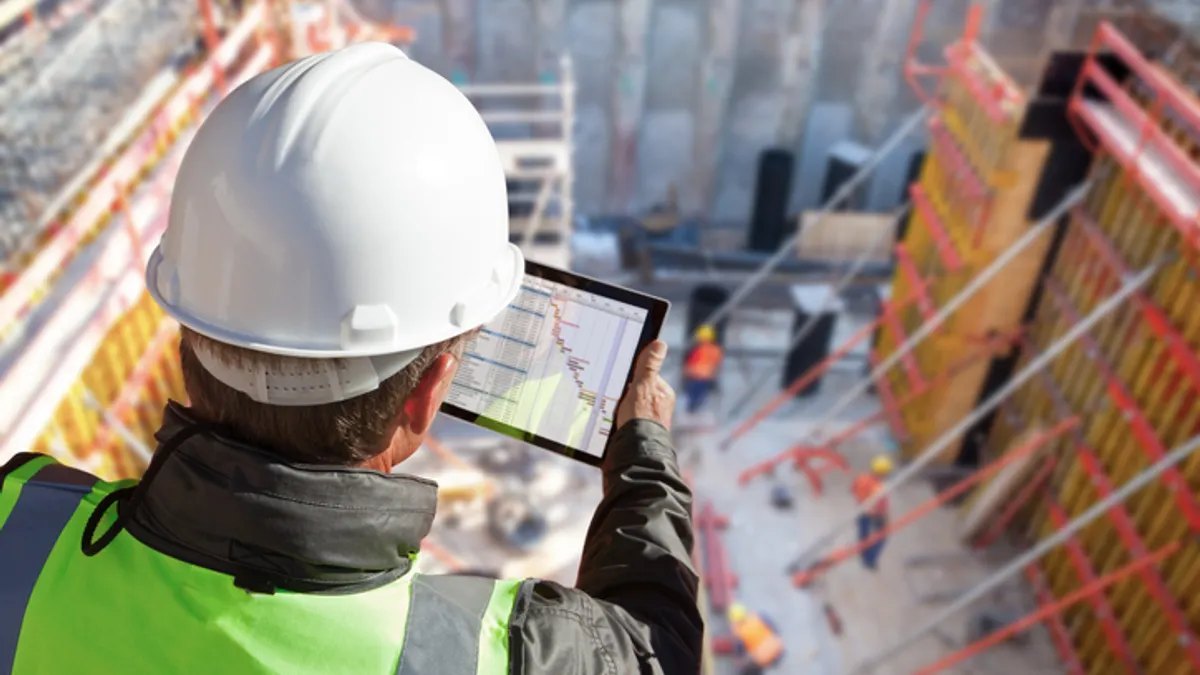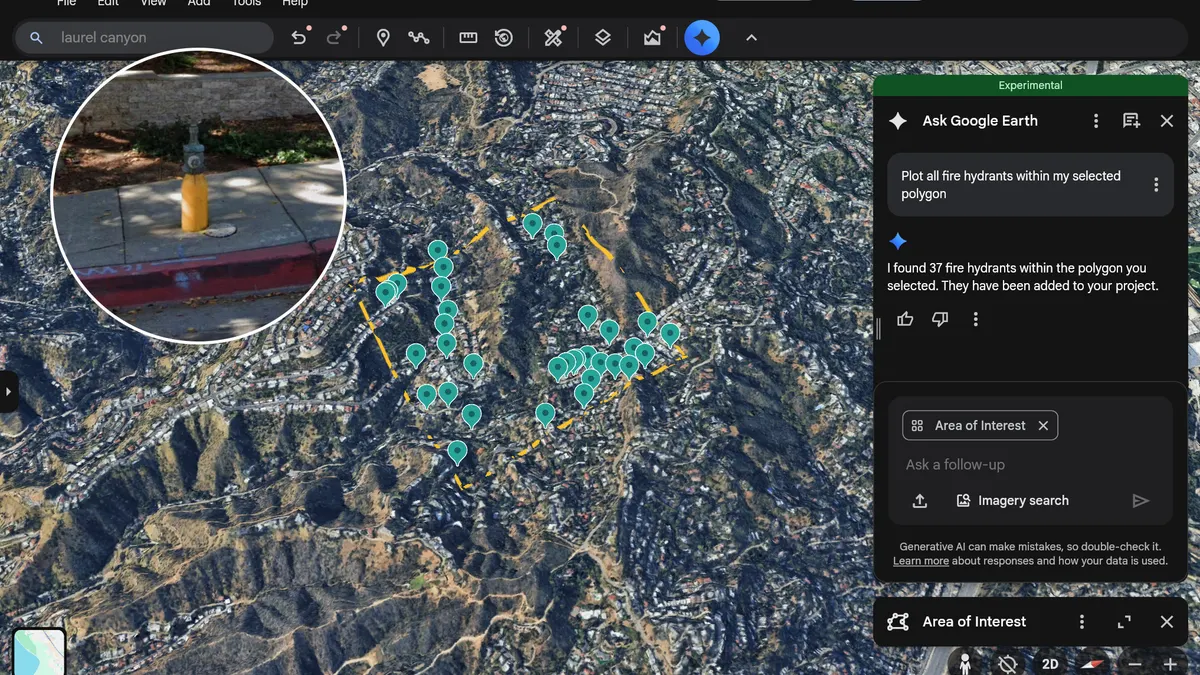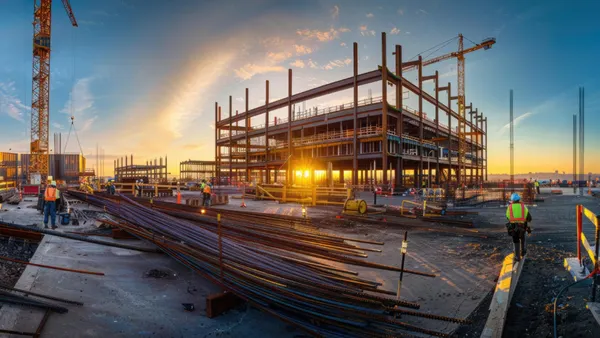The construction industry loves its drones, as do those in real estate, photography or any industry in which a bird's eye point of view can be useful.
In fact, since the Federal Aviation Administration began issuing exemptions to its ban on the commercial use of drones, the construction and infrastructure industries have led the number of exemption applications, as well as the exemptions themselves. In an April report from the Association for Unmanned Vehicle Systems International, the organization found that found that those two sectors combined made up almost 40% of FAA-approved exemptions. In addition, an NAHB survey revealed that the bigger the builder, the more likely it is to incorporate drone use into its operations.
However, the exemption process, originally expected to take six to 12 weeks, grew to as long as nine months in some cases, according to Nancy Egan, general counsel at 3D Robotics. The FAA also required that, even with an exemption, companies secure a certified pilot to operate the drones, an expensive and inconvenient task. These are a few of the reasons why the announcement last week that the FAA finally issued its commercial drone regulations has come as such a relief and has the drone industry poised to take off.
Why the new FAA rules are 'so beautiful' for drone users
The new rules, which apply to drones weighing less than 55 pounds, include the following:
- Limit drone operation to daylight hours
- Restrict altitude to 400 feet and speed to 100 mph
- Require operators to be 16 years of age or older and pass a background check and a written test every two years
- Require anti-collision lights for twilight operation
- Require operators to perform a preflight safety check
- Forbids drone flight over humans unless they are part of the drone operation or either covered by a structure or inside a vehicle
- Require the operator to keep the drone insight at all times
"The new regulations are great," Egan said. "I think they will be a watershed for the drone industry and construction industry." She said the FAA has streamlined the regulations so that companies can begin their drone operations in as little as two days, which also means a boon for drone manufacturers and associated drone technology. Egan added that even investment in drone technology should get a boost from the new regulations.
"It is broadly a great thing, I think," said Dick Zhang, CEO of Identified Technologies. Identified's drones are programmable, can complete drone flight on their own and can even land, exchange batteries and take off again, all on auto-pilot. He said the rules have been "two years in the making" and further whittle away obstacles to widespread adoption of drone use.
Zhang said business was already on the upswing prior to the FAA's decision, but ever since the announcement of the new rules, his company has received calls from potential customers who want to now move forward with a drone program. The main reason for this shift, he said, is the fact that firms no longer have to hire certified pilots.
"Part of why the regulations are so beautiful is that just about anybody can become certified and trained to use one of these," Zhang said.
One company's experience before the rule changes
One construction industry user of drones is Signature Custom Homes in the Seattle area. Anthony Hines, development and design manager, said Signature currently uses drones in its search for buildable lots before investing in a full survey, as well as for design issues like testing out window heights for optimal future views.
"We also use them in our marketing and sales with photos of our finished product," he said. Drones in general "have really changed a lot of things for us, and we utilize them probably more than a lot of our competition," he added.
As far as the new FAA regulations, he said, there's not much that will change Signature's current use. The builder already keeps records of all drone operations and notifies all surrounding neighbors preflight, "so they don't get nervous." The new rules, he said, seem to echo the common sense practices that Signature already follows. However, Hines said that the new rules should increase operational safety. "That makes me appreciate some of the regulations," he said.
To that end, he cited the example of a recent Signature project where another builder was using a drone on an adjacent lot, and it was obvious that the operator did not have much experience, Hines said. It was always in his mind that this created a safety hazard to not only his crews 50 feet away, but to the neighborhood. That operator ended up crashing the drone a few times next-door to another builder, he said.
So it's not so much what the regulations will enable experienced operators to do, Hines said, but what they will prevent inexperienced operators from doing. That's where the main benefit lies for now. "It was a real gray area before," Hines said.
Getting rid of the 'cowboys' in the skies
Safety is one of the reasons that Identified's drones, although they can fly on their own, must have a drone operator present during operation. Even though the FAA allows preprogrammed flights, Egan said, a person has to be available take over operation in case of some kind of malfunction or emergency. A drone must also always yield to a manned aircraft, so if, for example, a helicopter came into the drone's flight path, the operator would be required to land it immediately or lower the drone's altitude, Egan said.
Industry groups hope the new regulations eliminate "cowboys" who have been operating outside any rules. "If you put a bunch of hurdles in someone's way, they'll say, 'Look, I don't want to go through that whole process. I know how to use this. Nobody's going to get hurt. It's no big deal. I'm not going to get caught,'" Egan said.
While she added that the vast majority of drone operators up to this point utilized the exemption option, the new streamlined process will make it easier for everyone to get certified, registered and follow the law. "You'll get a much higher level of compliance," she said, "and a better culture of safety among drone pilots."
What to expect from future regulations
What's next for the regulations, Egan said, is an expansion of the "operational parameters" to better fine-tune them to practical industry applications and new technological developments. The FAA has already convened a rulemaking committee to determine what regulations around "flight over people" might look like, and after that, the FAA will take a look at rules for safe nighttime operation, as well as flight outside the operator's line of sight, she said. The goal, Egan said, is to make uses for which operators might obtain a waiver are just as safe as the ones currently permitted under the new rules.
Until the rules are tweaked, however, operators will still have to rely on a waiver system to operate outside of the new regulations. As far as predictions about what the most requested waiver will be Zhang, Hines and Egan agreed that it will most likely be around the prohibition of drone operation over people.
Egan and Hines pointed to the fact that construction industry use of drones will most certainly involve flyovers of construction crews, and Egan said a waiver of the "flight over people" rule will be necessary to avoid jobsite shutdowns. Zhang added that the ban on nighttime flights would also be an area of concern for those in security-related businesses.
"If Amazon even wants to come close to pulling off their vision," Zhang said, "they're going to have to fly over millions of people in New York City."
If the expected rush of drone permits becomes a reality, the general public is also going to have to get used to seeing drones overhead. However, Zhang said that as the public becomes more familiar with recreational drones, "We'll see that comfort level go up."


















